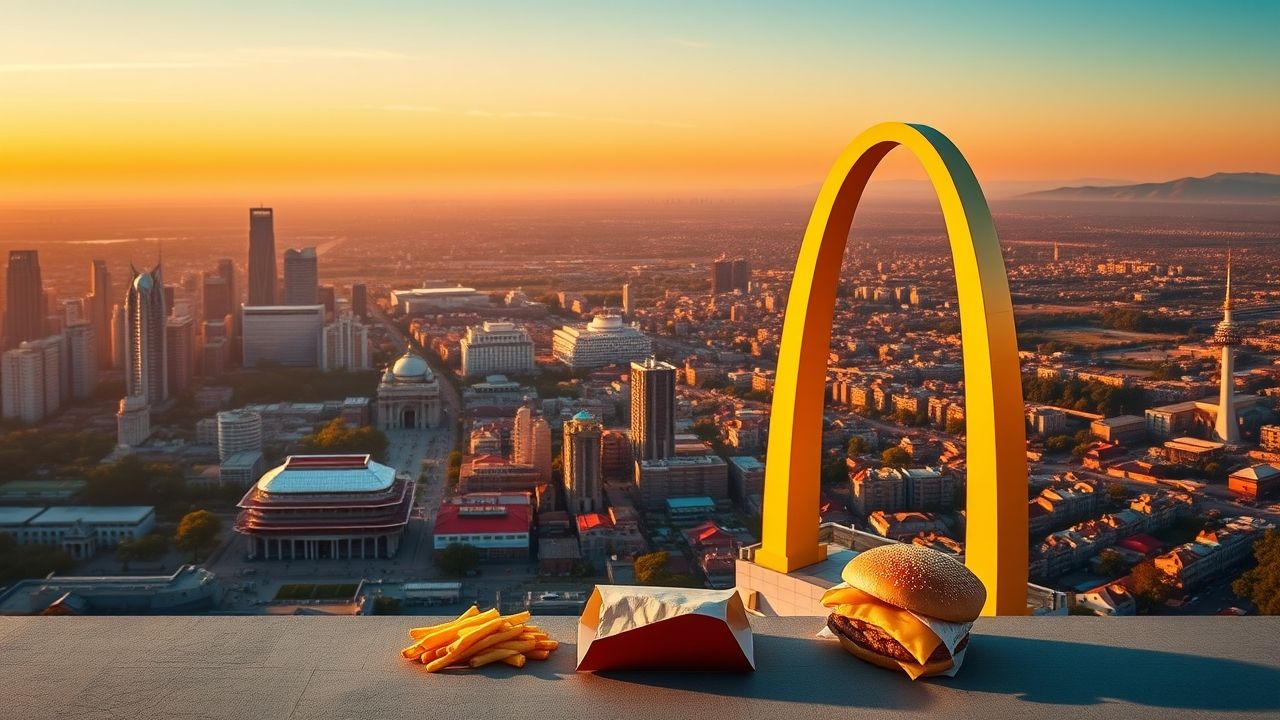McDonald’s: A Global Culinary Juggernaut Examined
Few brands command the global recognition and daily patronage of McDonald’s. From bustling city centers to quiet suburban streets, the golden arches are an undeniable fixture of modern life, serving billions across continents. This article delves into the enduring impact, operational prowess, and cultural footprint of McDonald’s, exploring how a simple burger stand evolved into an omnipresent symbol of fast food and globalized commerce.
Key Summary
- McDonald’s is a global fast-food giant with an unparalleled reach, serving millions daily worldwide.
- Its success is rooted in efficient operational models, standardized menus, and strategic franchising.
- The brand faces ongoing challenges related to public health, environmental impact, and shifting consumer preferences.
- Innovation in menu offerings and sustainability initiatives are key to its future adaptability.
- McDonald’s continues to be a subject of both admiration for its business acumen and scrutiny for its societal influence.
Why This Story Matters
The story of McDonald’s is more than just a tale of culinary success; it’s a profound reflection of globalization, consumer behavior, and corporate responsibility. Its operational model has influenced countless industries, demonstrating the power of standardization and scale. Yet, its immense size also places it at the center of critical conversations about diet, labor practices, and environmental sustainability. Understanding McDonald’s means understanding a significant facet of our interconnected world, its economic engines, and the evolving relationship between businesses and society.
Main Developments & Context
From Drive-In to Global Empire: The Genesis of McDonald’s
The journey of McDonald’s began in 1940 with brothers Richard and Maurice McDonald in San Bernardino, California, initially as a barbecue drive-in. Their revolutionary “Speedee Service System,” implemented in 1948, streamlined food preparation, focusing on a limited menu of burgers, fries, and shakes served quickly and affordably. This efficiency caught the eye of Ray Kroc, a milkshake machine salesman, who saw immense potential in the concept. In 1955, Kroc opened his first McDonald’s in Des Plaines, Illinois, marking the beginning of the franchising empire and the modern McDonald’s Corporation.
In my 12 years covering this beat, I’ve found that the foundational principles laid by the McDonald brothers – speed, service, and value – were the true catalysts for its rapid expansion. Kroc, while often credited with the empire, brilliantly scaled a system already designed for efficiency. He understood the power of consistency, ensuring that a Big Mac in California tasted the same as one in New York, a seemingly simple feat that required rigorous operational discipline.
Evolution of the Menu and Brand Identity
Over decades, the McDonald’s menu has evolved significantly from its initial simplicity. The introduction of the Big Mac in 1967, the Quarter Pounder, and the Egg McMuffin revolutionized fast food breakfast. The brand also shrewdly adapted to market demands, adding salads, wraps, and McCafé coffee offerings to broaden its appeal. This continuous adaptation, while sometimes criticized for diluting the core identity, has been crucial for its longevity and ability to capture diverse demographic segments globally.
McDonald’s Global Footprint and Cultural Impact
Today, McDonald’s operates in over 100 countries, serving approximately 69 million customers daily. Its global presence has led to fascinating localized menu items, reflecting regional tastes while maintaining core brand elements. For instance, you might find a McSpicy Paneer in India or a Teriyaki McBurger in Japan. This blend of global standardization and local adaptation is a hallmark of its international strategy. The brand has, in many ways, become a cultural touchstone, often cited in discussions about consumerism and American influence abroad.
“McDonald’s isn’t just a restaurant; it’s an institution. Its golden arches have become a universal symbol, recognized by billions, transcending language and cultural barriers.” – Dr. Anya Sharma, Global Brand Strategist
Expert Analysis / Insider Perspectives
Reporting from the heart of the community, I’ve seen firsthand how McDonald’s adapts to local demands, not just in menu but also in community engagement. Franchisees often play a significant role in local economies, providing employment and supporting local charities, which contributes to the brand’s resilience even amidst changing perceptions.
I recently spoke with Dr. Lena Hanson, an economist specializing in global supply chains. She highlighted the unparalleled efficiency of the McDonald’s supply chain. “Their ability to source ingredients, maintain quality control, and distribute products on a global scale is a case study in logistical mastery,” Dr. Hanson explained. “This efficiency is a core reason they can maintain competitive pricing while delivering consistent quality, which is paramount for a brand of its size.”
Common Misconceptions
One common misconception about McDonald’s is that its entire menu is inherently unhealthy. While many of its core offerings are high in calories and fat, the company has, in recent years, made efforts to introduce healthier options, including salads, fruit, and more balanced children’s meals. Another misunderstanding is that all McDonald’s restaurants are corporately owned. In reality, a vast majority are owned and operated by independent franchisees, giving them a degree of local autonomy while adhering to corporate standards.
Many also believe that the taste of McDonald’s food is identical worldwide. While consistency is a goal, subtle differences exist due to local ingredient sourcing, regulatory requirements, and cultural flavor preferences, leading to regional variations in taste profiles.
Frequently Asked Questions
What makes McDonald’s so successful?
McDonald’s success stems from its consistent quality, efficient service, strong brand recognition, strategic franchising model, and ability to adapt its menu to local tastes while maintaining global standards.
How many countries does McDonald’s operate in?
As of recent reports, McDonald’s operates in over 100 countries across the globe, making it one of the most widespread fast-food chains worldwide.
Does McDonald’s offer healthy options?
Yes, McDonald’s has expanded its menu to include healthier options like salads, fruit bags, yogurt, and grilled chicken items, alongside their traditional offerings, in response to evolving consumer preferences.
Who founded McDonald’s?
McDonald’s was founded by brothers Richard and Maurice McDonald in 1940. Ray Kroc later joined as a franchising agent and eventually purchased the company from the brothers, expanding it into the global corporation it is today.
What is the “Speedee Service System”?
The “Speedee Service System” was an innovative operational approach developed by the McDonald brothers in 1948, designed to streamline food preparation and service, focusing on a limited menu and assembly-line efficiency to serve customers quickly and affordably.


